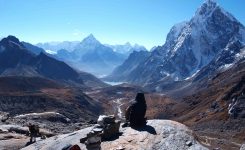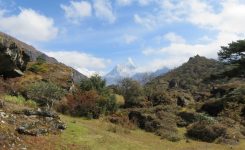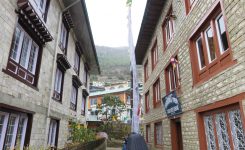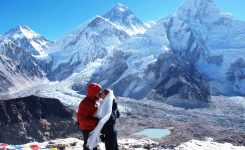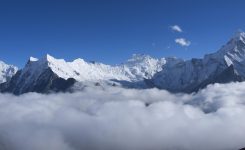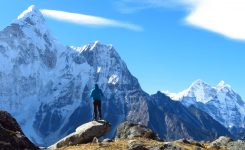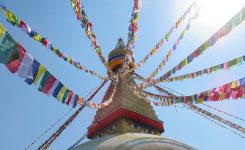Everest Base Camp, Three Passes Trek, Travel
Tengboche to Pangboche, Everest Base Camp Honeymoon (Day Six)
DESTINATION: Pangboche
ELEVATION: 3,985 meters
ELEVATION GAIN: +118 meters
DISTANCE: 3.1 km (1-2 hours of walking)
OXYGEN: 63% of sea level
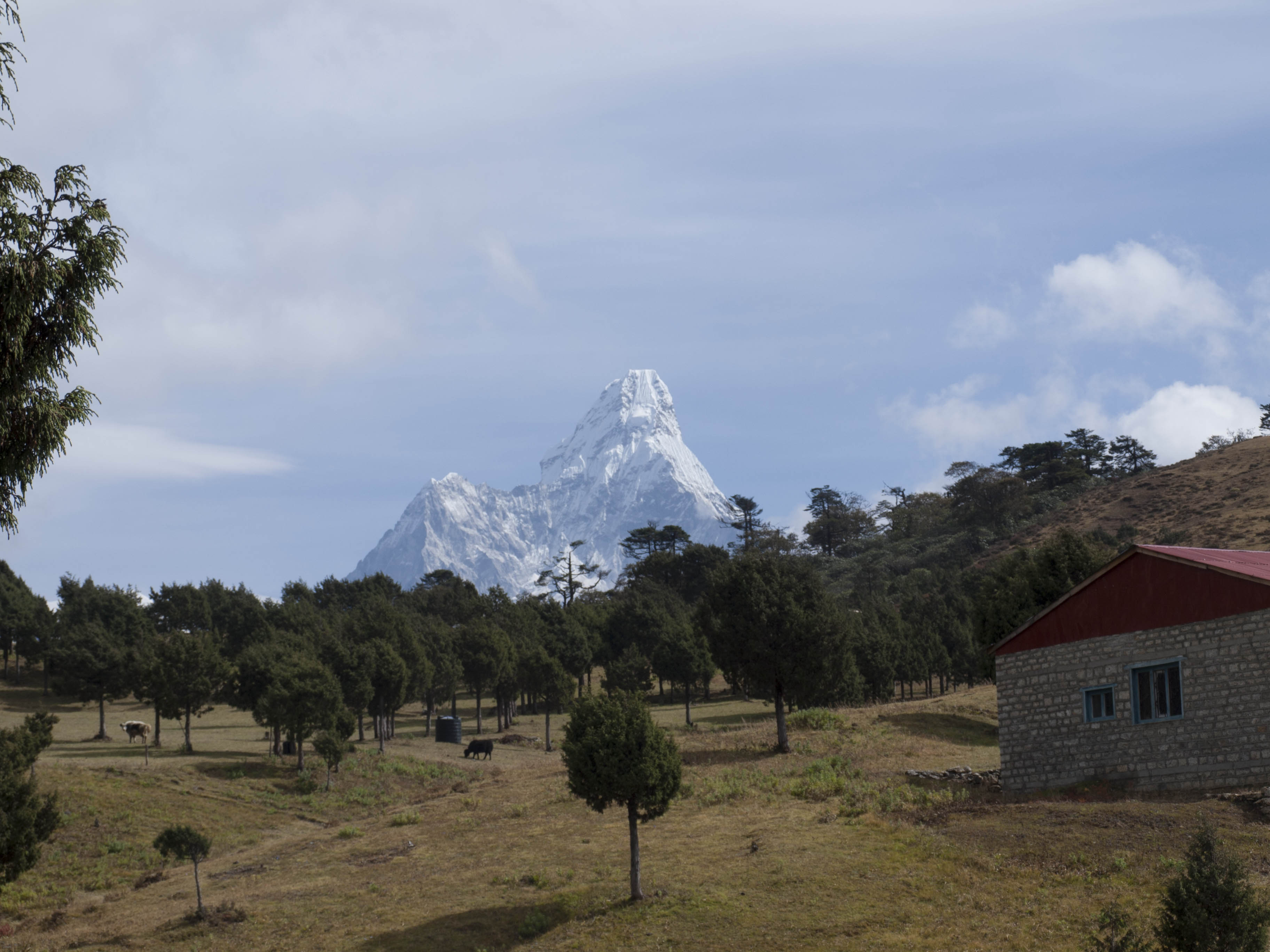
This day is one of those I vaguely remember due to the signs of AMS. Our plan for our day six in the Everest Region was to trek from Tengboche to Pangboche, which is a relatively quick walk (about two hours of pleasant hiking), and then do a few acclimatization hikes before bedtime.
Unfortunately, I don’t recall much from this hike except for the number of tourist groups trekking higher that same day on their way to the Everest Base Camp. Although the Three Passes Trek is off the beaten path, you still share some of the trek routes with all the hikers going straight to the Everest Base Camp and back, which is when it gets very crowded.
Main Everest Base Camp Trek Gets Crowded
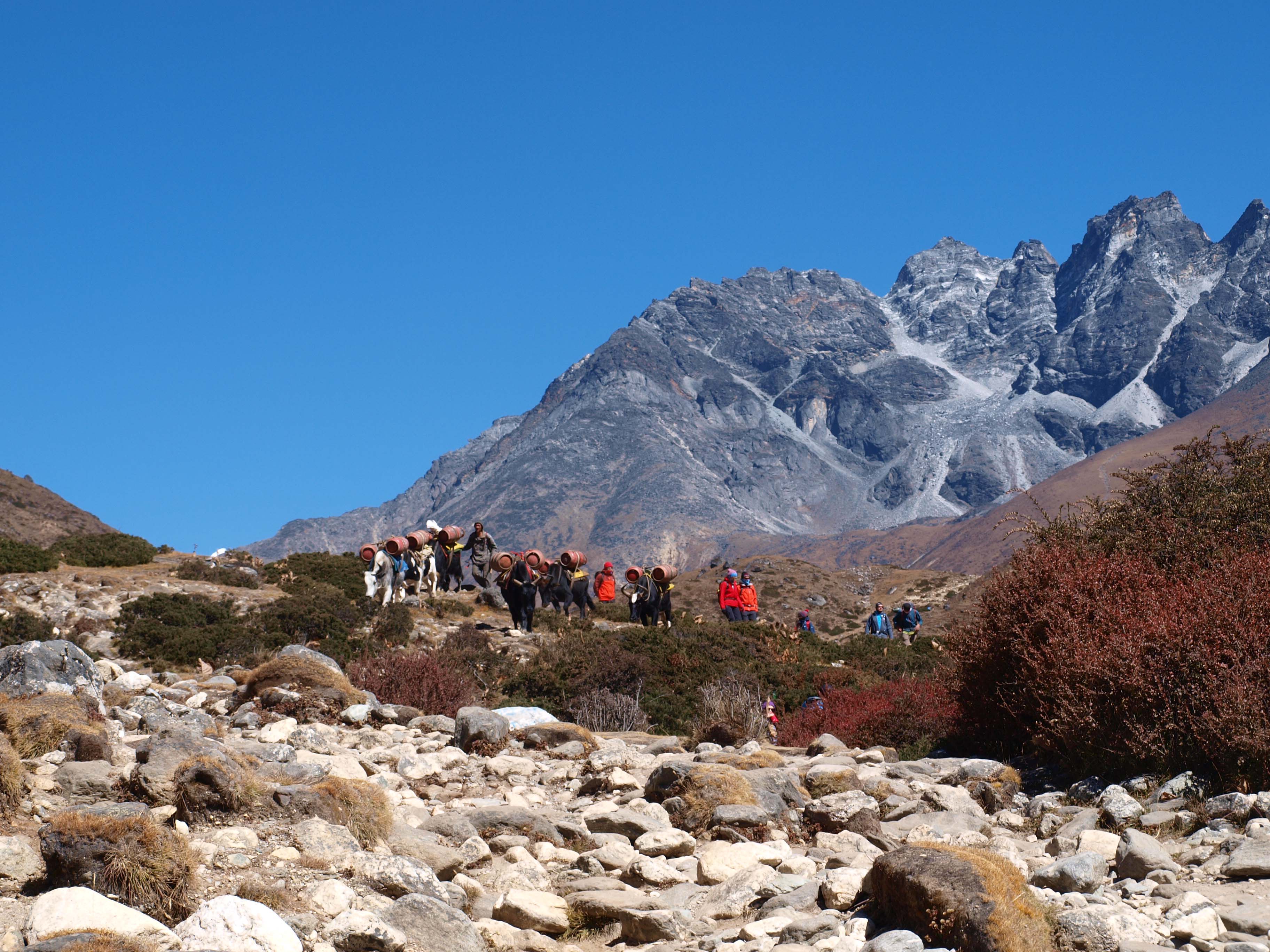
Once you find yourself on the main Everest Base Camp Trek trail, you can quickly recognize it by hiker line up seen a kilometre ahead. As this is a top-rated trek, and October is one of Nepal’s two main tourist seasons, there is no way around crowds, so do your best to stay calm and enjoy the views.
We originally planned to leave at about seven in the morning sharp, but when we got to the teahouse restaurant, it took a while to get served (as we weren’t a part of the group). Something you’ll notice on the main EBC trek is if you’re travelling without a guide, chances are your food will be served after all the groups have received theirs. When we were finally done with our breakfast, repacked our backpacks, and were ready to check out and go, it was way later than we have anticipated leaving by.
Travel Tip: If travelling in a couple or solo, wake up earlier to beat the crowds. Your trek to Pangboche will be much more pleasant if you’re ready to leave before the rest of the tourist groups take off. However, if you’re travelling with a guided group, you won’t have much choice with timing. One thing to keep in mind when you travel in a group is to make sure you recognize your AMS signs early and make sure not to ignore them. We overheard one of the guys in a group tell their guide that he’s been having altitude headaches for three days and that they kept him awake at night, and was recommended Advil and a higher dose of Diamox. We didn’t meet that group again, so I can’t tell you if the guy got better, but one thing is for sure, Altitude Sickness related helicopter evacuations are pretty standard on the trek.
Teahouses Get Booked Up Quickly

So when we started our morning trek, the trail was filled with other trekkers, some solo, some with a group, and as you can imagine, it was loud, and there was traffic. Apart from crowded trails slowing you down, they also mean finding a place to sleep may be challenging. This happens because some bigger groups usually get priority treatment, and a few hikers travelling without a guide we met on the way had faced a situation where they had to sleep in the kitchen of a teahouse as there were no more rooms available. Luckily, we didn’t have that issue, somehow we almost always arrived before the crowds or would stop in a village that is off the main Everest Base Camp Trek path, but we did have to run around to find accommodation from time to time.
Rushed Ascent Can Cause Altitude Sickness Headaches
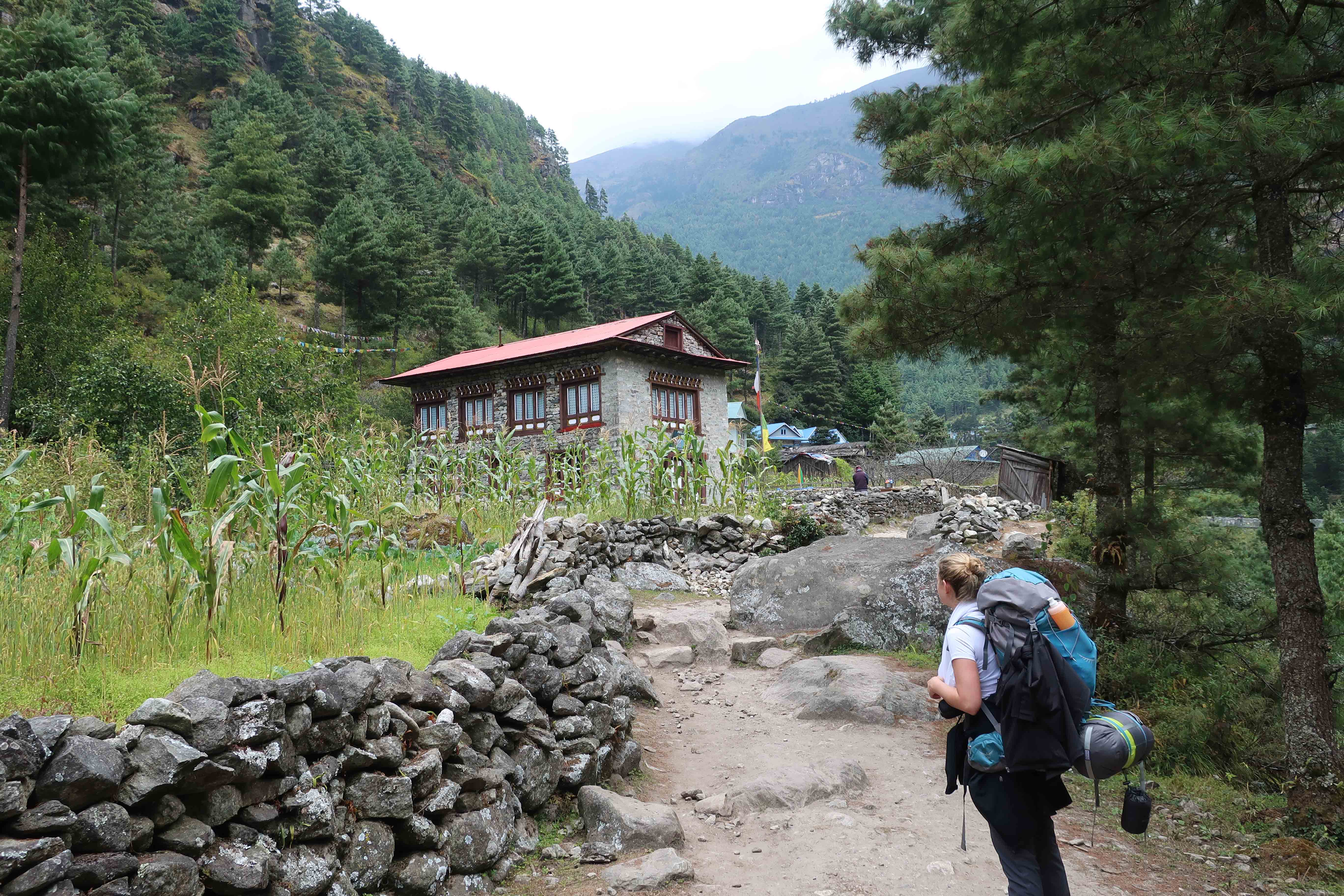
To go back to our morning trek from Tengboche to Pangboche, we decided to rush to the village to make sure we have a place to sleep once we saw the crowds. Although it seemed like a good decision at the moment, it wasn’t. For about an hour, we speed-walked past an endless caravan of loud (at times obnoxious) tourist groups, and when we were close to beating the crowds, that’s when I got the first signs of the AMS headache. It’s one you can easily recognize as it hits you suddenly and is pretty hard to ignore.
Travel Tip: After reading several sources on AMS headaches and the difference between mild and moderate symptoms, I concluded that if a 400 mg ibuprofen takes care of the pain, it’s still a mild/moderate symptom; however, if pain killers don’t help and you start experiencing other symptoms, then immediate medical attention may be required. Read more on my Altitude Sickness experience on the Three Passes Trek.
Visiting Pangboche
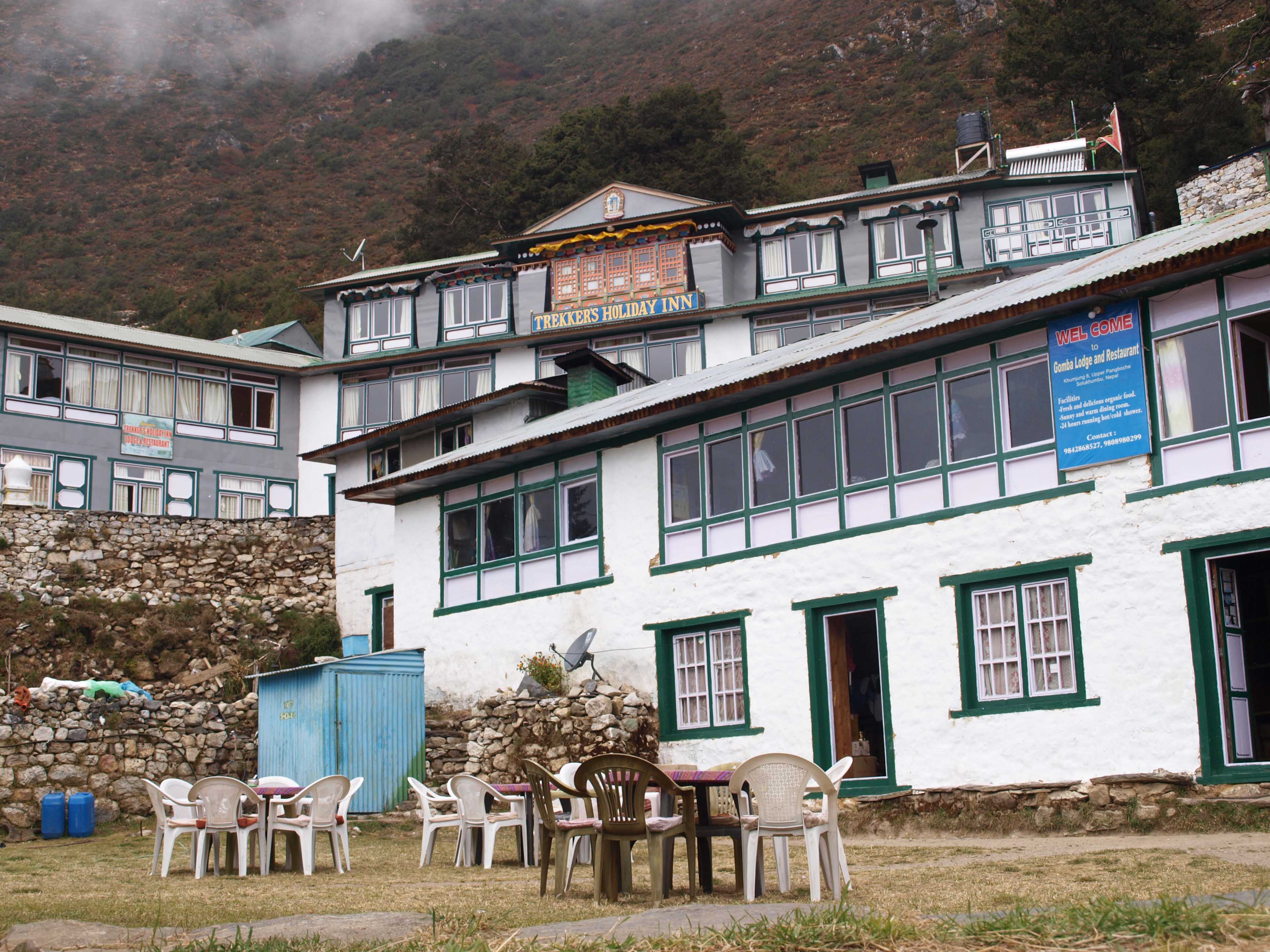
The village of Pangboche (3985 meters) is divided into the lower and upper villages, and the Lonely Planet suggests staying in the upper village to experience its uniqueness. However, when we got to the village, we were tired, I had a bad headache, and we arrived pretty late, so we didn’t want to risk not finding a place to sleep – which is why we settled on the lower village.
The views of Ama Dablam you get from the village of Pangboche are stunning, and if you have a chance, this one deserves an exploration visit on your way.
Pangboche Monastery and Yeti Remains
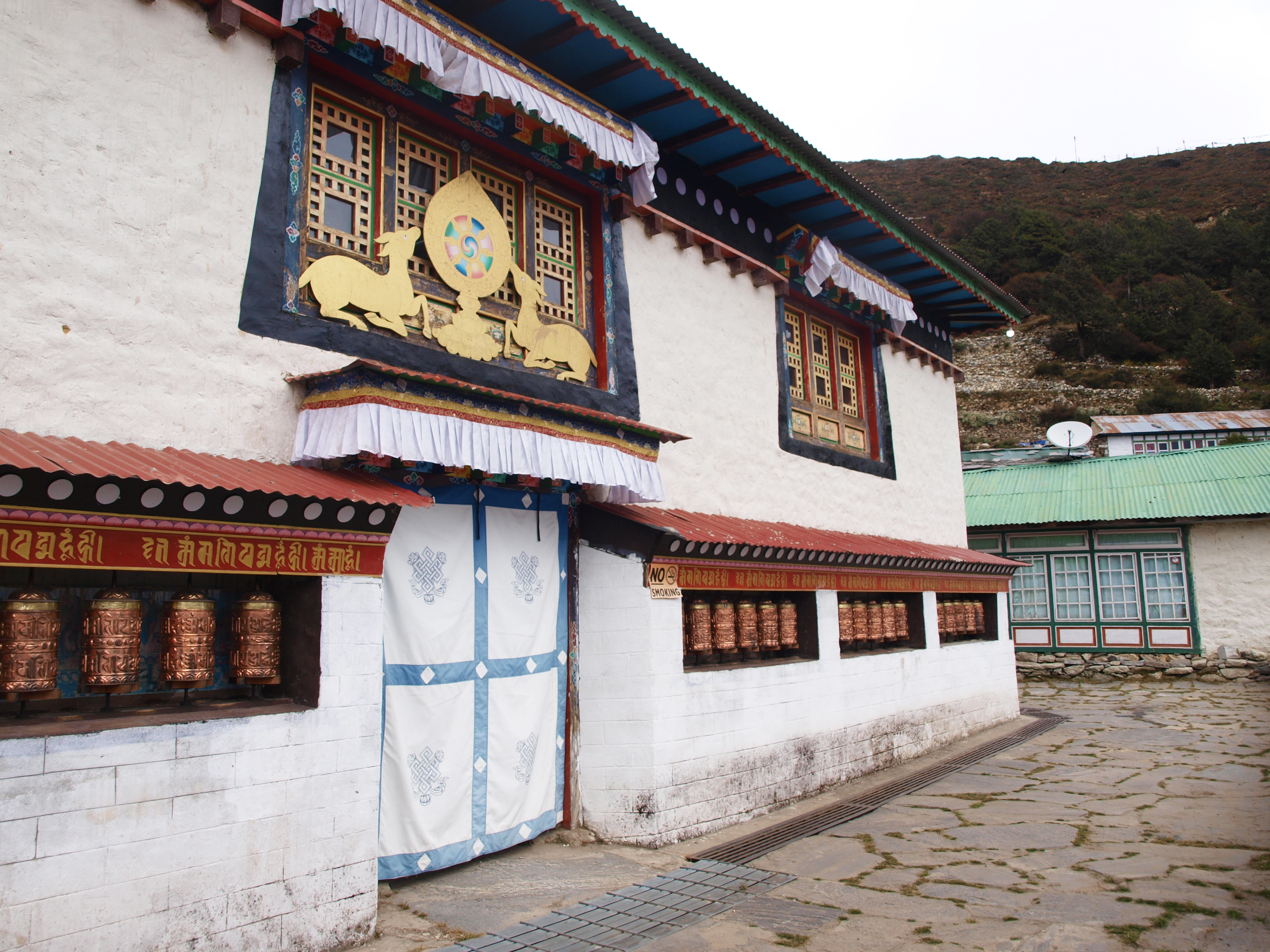
One of the main reasons we wanted to do a stopover in Pangboche was its proximity to the Ama Dablam Base Camp Trek, a beautiful side trip you can do to acclimatize. Once we got settled, we wanted to go up to the Ama Dablam Base Camp sight to acclimatize and absorb the close-up views of the beautiful giant. Unfortunately, my headache (which never left since that same morning) got worse on the way up. As we walked up on the trail, I felt pretty bad with my head pulsating and an overall feeling of nausea and lightheadedness.
Not to risk making my symptoms worse, we turned around and went to see the old Pangboche Monastery instead. The monastery, located in the upper village of Pangboche, is famous for having some 300-year-old skull and hand remains of a Yeti, a well-known character in the Himalayan mythology. The display hand is a replica as the original has been stolen according to the pamphlet we got with a 200 rupees entrance fee. The monastery inside is unique, similar to the Tengboche monastery, but is way smaller. If you have the time, it’s worth a visit.
Pangboche to Ama Dablam Base Camp
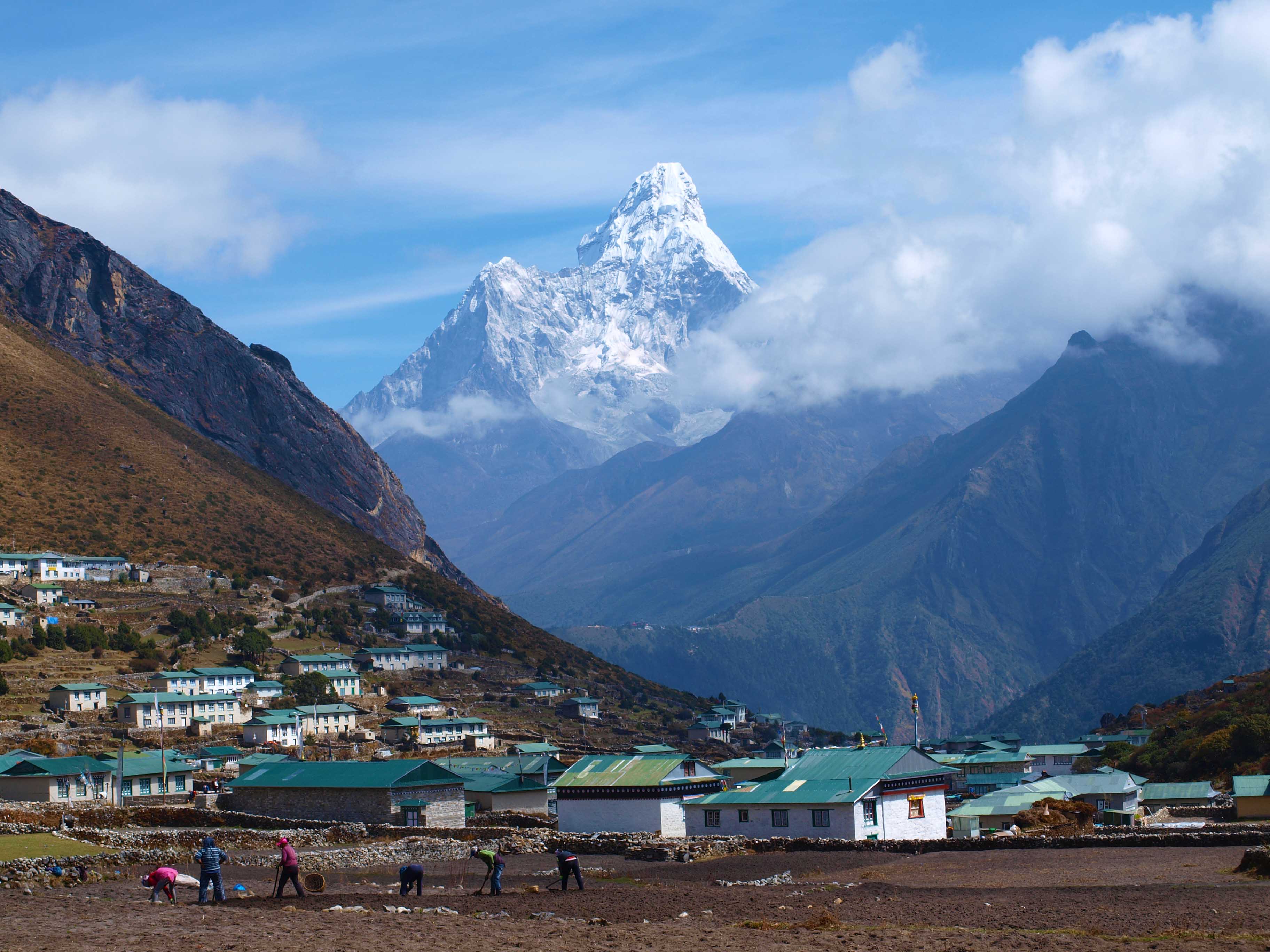
The views of the Himalayan mountains surround the charming village of Pangboche are stunning. So even if you don’t do any other side treks and juts absorb the beauty of the giants surrounding you, you’ll have a lot to remember. However, many trek the less known route of Pangboche to the Ama Dablam Base Camp (and the more adventurous and experienced climbers can attempt to conquer Ama Dablam, the magnificent giant that it is). As I mentioned above, we didn’t get a chance to visit this trail. According to a few online sources, the trek from Pangboche to the Ama Dablam Base Camp is about 4.7 km long. You arrive at an elevation of 4,570 meters (a height you wouldn’t have been exposed to since you started the trek, which is why this is a great way to acclimatize). Since the first time I saw Ama Dablam standing gloriously in the background, I fell in love with this mountain. It’s still my favourite, and I’ll definitely plan a trek to the base camp and potentially to the top of it one day.
I do regret not going up to the Ama Dablam Base Camp, but if I were to do it again and have the choice between my health and the trek, I’d make the same choice – skip the hike and acclimatize. It helps if you’ve been exposed to similar altitudes and know how your body takes it, but if this is the first time and you’re unsure, take it easy. After all, taking those risks for one side trek may ruin your whole time in the Everest region, so trek responsibly.
I read up a lot on the symptoms, causes, and treatments on acute mountain sickness (AMS), but I didn’t find how to tell the difference between mild acclimatization and a start of a more severe reaction to altitude. I documented my personal experience with a mild to moderate altitude sickness while doing the Three Passes Trek if you are interested. Please note that the Altitude Sickness 101 is purely for your information, and you should consult your physician on the risks of altitude sickness before heading out to the High Himalayas.
Read next:
Everest Base Camp Trek Series:
View All Posts
- Day 1 – Toronto to Kathmandu
- Day 2 – Exploring Kathmandu
- Day 3 – Kathmandu to Lukla
- Day 4 – Namche Bazaar
- Day 5 – Namche Bazaar to Tengboche
- Day 6 – Tengboche to Pangboche
- Day 7 – Pangboche to Dingboche
- Day 8 & 9 – Dingboche to Chuchung
- Day 10 – Chuchung to Lobuche (over the Kongma La Pass)
- Day 11 – Lobuche (and the Italian Pyramid)
- Day 12 – Gorakshep to Everest Base Camp
- Day 13 – To Kala Patthar and Dzongla
- Day 14 – To Dragnak (over Chola Pass)
- Day 15 – Gokyo (with Gokyo Ri ascent)
- Day 16 – Back to Namche Bazaar
- Day 17 – Namche Bazaar to Lukla
- Day 18 – Lukla to Kathmandu
- Day 19 – Kathmandu to Toronto


